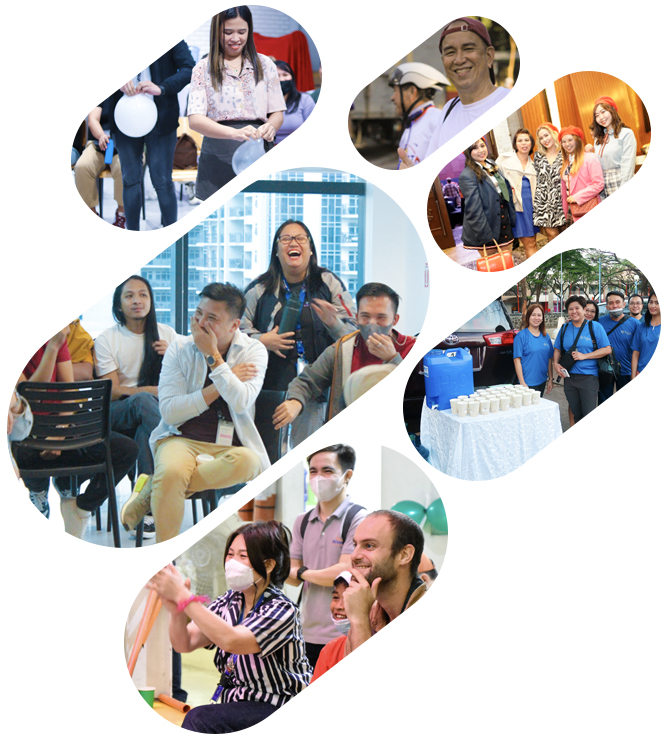In today’s competitive job market, relying on chance to shape your career is no longer enough. A structured approach, one that aligns your ambitions, strengths, and opportunities, can make all the difference between drifting aimlessly and thriving professionally. That’s where a professional development plan comes in.
Think of it as a blueprint for your professional journey: clear goals, actionable steps, and checkpoints to keep you on track. A well-designed roadmap not only gives you clarity but also boosts motivation, helps you develop a career plan, and prepares you for unexpected changes.
In this comprehensive guide, we’ll walk you through a step-by-step process to create a career roadmap that works, highlight the most common mistakes to avoid, and answer pressing questions professionals often ask while building their long-term strategy.
Why Do You Need a Career Roadmap?
Imagine setting out on a long road trip without a map or GPS. You might enjoy the ride for a while, but sooner or later, you’ll feel lost, uncertain, and possibly frustrated. The same principle applies to your career. Without a structured approach to creating a career growth plan, you risk drifting aimlessly, making reactive decisions instead of proactive ones.
This can lead to:
- Accepting roles that don’t align with your passions.
- Wasting years in roles with limited or no growth.
- Missing out on opportunities to learn and upskill.
A career roadmap template acts as your compass. It gives you clarity and direction by answering three essential questions:
- Where are you right now?-Assess your current role, skills, and achievements.
- Where do you want to go?-Assess your current role, skills, and achievements.
- How are you going to get there?-Identify the skills, experiences, and milestones that will bridge the gap.
Whether your goal is to rise to senior leadership, specialise in a niche field, or explore careers in the contact center industry, including fast-growing hubs such as the Philippines, a roadmap ensures every decision is purposeful, strategic, and aligned with your future success.

Proven Steps to Mapping Out Your Career Path
Building a career development plan doesn’t have to feel overwhelming. Here are the steps in creating a career plan that you can tailor to your personal and professional goals.
Step 1: Reflect on Your Current Situation
Before creating a career roadmap, it’s crucial to understand your current standing. Reflection helps you identify gaps, clarify your strengths, and evaluate how your current role aligns with your long-term vision.
Assess Your Strengths and Weaknesses
Take stock of what you excel at and where you struggle. For example:
- Strong communication can lead to opportunities in leadership, sales, or client-facing roles.
- Analytical ability may be well-suited for data science or finance.
Utilize tools such as SWOT analysis (Strengths, Weaknesses, Opportunities, and Threats) or psychometric assessments to map your professional profile.
Identify Your Interests and Passions
You’re more likely to succeed in a career that excites you. Ask yourself:
- What tasks energise me?
- Which industries or functions do I find engaging?
- Do I thrive in structured or dynamic environments?
If you’re passionate about helping people, for example, you might excel in roles requiring customer service soft skills.

Evaluate Your Current Role and Responsibilities
Your present job is a launching pad. Assess how it contributes to your long-term plan. Ask:
- Does my current role align with my career goals?
- Am I learning transferable skills?
- Do I see growth opportunities here?
If the answer is no, it’s time to start exploring how to make a career plan that leads elsewhere.
Step 2: Define Your Long-Term Career Goals
Setting long-term goals is like choosing your destination before planning the route. Without a clear vision, you risk drifting from one job to another.
Consider:
- Where do I see myself in 5, 10, or 15 years?
- Do I want to lead teams, become a specialist, or start a business?
- How do I define success: money, impact, work-life balance, or recognition?
For example, if you aim to rise to senior management in a multinational organisation, your professional development goals include leadership training, networking, and industry certifications.
Step 3: Break Down Your Long-Term Goals Into Smaller Milestones
Big dreams are inspiring, but they can also feel overwhelming. The solution? Break them down into smaller, achievable steps.

Short-Term Goals and Milestones
These are objectives you can accomplish in 6–12 months.
Examples:
- Completing an online certification.
- Improving presentation skills.
- Expanding your professional network.
Mid-Term Goals
These goals typically span 2–5 years and bridge the gap between short-term actions and your long-term destination. A mid-term career development plan example can be any of the following:
- Moving into a supervisory role.
- Completing an advanced degree.
- Transitioning into a different industry.
By breaking down the process, you transform an intimidating long-term vision into actionable checkpoints.
Step 4: Identify the Skills and Knowledge You Need
No roadmap is complete without recognising the capabilities you need to succeed. This is the stage where creating a professional development plan truly comes alive.
Conduct a Skills Gap Analysis
Compare your current abilities with the requirements of your desired role.
For example:
- If you want to move into HR, do you lack experience in employee relations?
- If you aim for IT leadership, do you need advanced cloud certifications?
This analysis helps you pinpoint areas to focus your efforts.
Leverage Educational Opportunities
Learning never stops.
Consider:
- Online courses, workshops, or bootcamps.
- Certifications relevant to your industry.
- Employer-sponsored training programs.
If you’re exploring how to upskill for career growth, combine formal education with hands-on experiences like job rotations or volunteering for cross-functional projects.

Seek Feedback
Often, peers and managers can provide insights into blind spots you may not notice. Regular feedback can refine a career development plan for employees and keep them on track.
Step 5: Create an Action Plan
Once you know your goals and skill gaps, the next step is to create a career plan that bridges the gap between where you are and where you want to be.
Prioritize Your Goals
Not all goals carry the same weight. Rank them by importance and urgency. Focus on activities that create maximum impact.
Set Deadlines and Milestones
Deadlines make your plan tangible. Without them, even the best intentions may remain incomplete.
For example:
- “Complete certification by December.”
- “Apply for at least five new roles by Q2.”
Stay Flexible
Life and careers rarely go exactly as planned. Flexibility ensures you can adjust goals without losing sight of your long-term vision.
Step 6: Monitor, Review, and Adjust Your Roadmap Regularly
A career roadmap is not static—it’s dynamic. Regular reviews keep you aligned and adaptable.
Track Your Progress
Set quarterly check-ins to review achievements and challenges. Use performance metrics such as:
- Number of new skills acquired.
- Networking connections made.
- Promotions or lateral moves achieved.
Seek New Opportunities
As industries evolve, new paths open up. Stay updated with market trends to avoid stagnation. For example, if you’re considering BPO jobs, watch how digital transformation is reshaping the sector and what skills are becoming essential.
Common Mistakes to Avoid When Creating a Career Roadmap
Even the most motivated professionals can stumble when designing a career roadmap. A plan only works if it is realistic, adaptable, and aligned with your actual goals. Unfortunately, many people overlook critical factors that can derail their progress. Here are some common pitfalls to watch out for:
- Being too vague:Vague goals such as “I want a better job” or “I want to grow in my career” lack direction. Without specifics, it’s difficult to track progress or measure success. Instead, set clear, actionable objectives like “secure a project management role within 18 months” or “complete a data analytics certification within the next year.” Specificity creates accountability.
- Ignoring skill gaps:One of the most damaging mistakes is assuming you’re already qualified for your dream role. Industries evolve quickly, and without upskilling, you risk being left behind. Conduct a skills gap analysis and proactively work on certifications, workshops, or training to stay relevant.
- Not seeking feedback: Self-assessment is valuable, but it can also be biased. Feedback from managers, peers, or mentors can highlight blind spots and strengths you may overlook. Regular feedback ensures your plan remains practical and aligned with workplace expectations.
- Failing to adjust:Life circumstances, industry changes, or economic shifts may require you to rethink your roadmap. Stubbornly sticking to a rigid plan can lead to frustration. Flexibility is key—review your roadmap regularly and make adjustments when necessary.
- Comparing with others:Every career journey is unique. Constantly comparing your timeline with peers can lead to unnecessary stress and poor decisions. Focus on your progress and celebrate milestones, no matter how small.
By avoiding these mistakes, you’ll create a career planning and development process that is both strong and sustainable, setting you up for long-term success.
Conclusion
Creating a career development plan is about more than writing goals, it’s about designing a life of purpose and direction. By reflecting on your current situation, defining long-term goals, breaking them into milestones, identifying skill gaps, and continuously reviewing your progress, you can do career path planning that’s both strategic and adaptable.
Whether you aim to rise in corporate leadership, excel in careers in the contact center industry, or explore entrepreneurial ventures, a professional development plan keeps you focused and motivated. Remember, success isn’t a straight line, it’s a series of informed choices and consistent actions. Start today, and you’ll thank yourself in the future.
And if you’re exploring opportunities in global BPM and customer experience sectors, organisations like HGS Philippine can offer meaningful pathways to align your professional roadmap with future-ready industries
Frequently Asked Questions (FAQs)
How can I measure my progress along the way?
You can measure progress by setting measurable goals—like certifications completed, promotions earned, or skills gained—and reviewing them quarterly. Tracking milestones helps you stay accountable.
What are the key components of a career development plan?
A strong plan includes self-assessment, defined long-term and short-term goals, a skills gap analysis, an action plan with deadlines, and regular reviews.
What if my career roadmap doesn’t go as planned?
It’s normal for plans to shift. Stay flexible, adapt to new circumstances, and revisit your roadmap to realign with changing interests or opportunities.
Can a career roadmap help with job satisfaction?
Absolutely. By aligning your daily tasks with your long-term passions and goals, you’ll feel more fulfilled and motivated, which in turn reduces burnout and career dissatisfaction.
 Philippines
Philippines Canada
Canada Colombia
Colombia India
India Jamaica
Jamaica UK
UK US
US SA
SA



